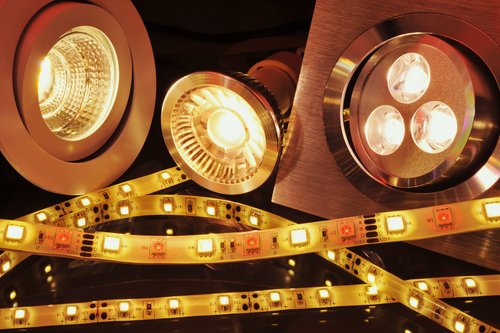Unfounded fears over health risks of LEDS
Written by Tim Greenhalgh
Posted on August 2, 2017
LED lights have been given a clean bill of health by an expert scientific committee in a new report from the European Commission.

The Scientific Committee on Health, Environmental and Emerging Risks (SCHEER) says that in normal use, there is “no evidence of direct adverse health effects” from LEDs.
The committee’s findings emphasised that studies of LED effects at the cellular level and on animals which identified adverse effects had been carried out under conditions that did not effectively relate to normal conditions or used exposure levels above internationally agreed limits.
SCHEER did point to cursory evidence that late-evening exposure to light, including that from LEDs and/or screens, could have an impact on sleep patterns – the circadian rhythm. But it also stressed that there was no clear evidence that this affected health.
Effects on health
The committee is continuing to gather responses and evidence on the topic of LEDs and effects on health until September 17th this year but the preliminary findings do point to the conclusion that there is nothing to fear from LED lighting.
As with all relatively new and rapidly evolving technology, the data and depth of research is not large but propositions over the past few years from a range of bodies that LEDs can damage eyes and skin, and disturb sleep, seem ill-founded.
It looks increasingly likely that the fears which accompany the spread of all new technologies are echoed in the sometimes alarmist reports on LEDs and like the concerns over mobile phones, will prove to be incorrect.
But the committee rightly advises that more research is beneficial as the long-term effects of lighting on health are measured.
Dazzle and glare
The report did raise issues around flicker, dazzle and glare, with a specific warning on the potentially distracting effect of pulsed light emission from LED lights in cars.
It also signalled that people should be mindful of vulnerable groups, including children at higher risk of being dazzled by blue lights and with damage to the retina as well as the elderly suffering discomfort from LEDs and finding LED displays harder to read.
Issues over health and LEDs were rekindled last year when family doctors in the American Medical Association (AMA) issued a report on what it termed harmful effects of LED street lighting.
The report, “Human and Environmental Effects of Light Emitting Diode (LED) Community Lighting”, offered guidelines on what levels of lighting were best in urban areas to avoid bad effects like disrupted sleep patterns.
No evidence
However, the AMA report does not cite any evidence that gives details of intensity and duration of exposure to what it terms “white” LED street lighting that emits more “blue light” (4000K and above), which some studies suggest suppresses melatonin, the sleep-regulating hormone.
Clearly, for street light planners, there is a need to be savvy about levels and intensity of lighting when upgrading to LEDs, ensuring a balance between efficacy and environment.
For indoor lighting, the quality of LED components and manufacture is crucial, as is the most effective choice of lamp for a given setting.
While detailed advice from the UK government on health and LEDs is scant, the US Department of Energy is clear. It says:
“While there’s nothing inherently dangerous about LED lighting, it should be used with the same prudence with which we use any other technology. It’s important to remember that these issues have been around for decades, long before the emergence of LED technology. More than any other technology, LEDs offer the capability to provide, for each application, the right amount of light, with the right spectrum, where you need it, when you need it.”
If you need expert advice on the choice of LED lighting, call our team on 0333 123 5464.